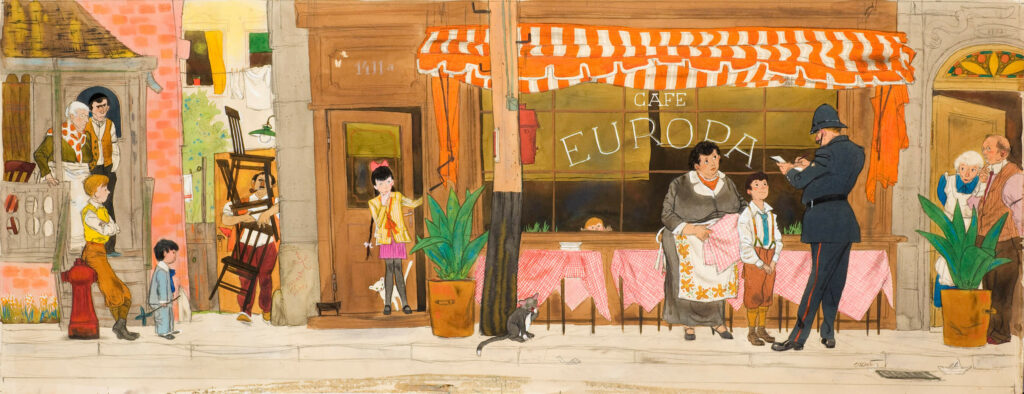In this illustration Cahén depicts the tense moment when the writer’s mother, who does not speak English, has found herself in trouble with the law over her innocent attempt to open a European-style sidewalk café. As in a theatrical scene, the dramatic event, the setting, and the characters are portrayed in such detail that one can guess what is going on without reading the text—yet be drawn into the story to find out what happens next.
Key to Cahén’s success as an illustrator was his ability to depict personality and ethnicity without resorting to stereotypes: each of the twelve people (and two cats) has a highly individualized face and expression. Cultural backgrounds are only subtly hinted at: the Jewish man’s kippah, the matron’s ankle-length skirt and embroidered apron, the gingham tablecloths. Everyday familiar touches and behaviours—the paper boat in the gutter, the potted plant on the sill, the littlest child peeping shyly from the window, the worried senior on the right, and the wide-eyed, naive optimism of the son translating for the policeman—elicit sympathy for the European immigrants navigating Ottawa’s uptight environs.
